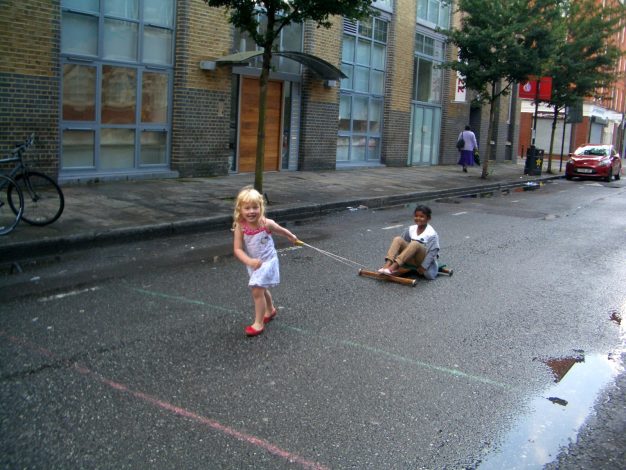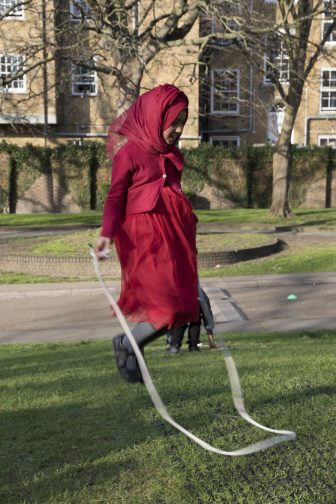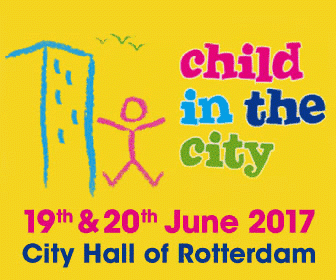
Community play on the estates of East London – Part 1
How can advocates and practitioners support children’s play where there is no dedicated space for it, and the wider environment may seem hostile or unfriendly to them? In these edited extracts from his evaluation report, Tim Gill explores how a voluntary sector play association in one of the UK’s most deprived inner city boroughs, Tower Hamlets in East London, took playwork to where children live.
The benefits of outdoor play as part of a happy, healthy childhood are well recognised, and enshrined in national guidance and international conventions on children’s rights. Parents and the wider community are concerned about children’s opportunities to play, and value play provision. Children who want to play outdoors, and parents and carers who want to let them, face significant challenges.
In Tower Hamlets, these challenges are magnified. The borough has a dense, highly diverse and comparatively disadvantaged population, with its high levels of child poverty and childhood obesity. A high proportion of residents live in flats and social housing and there is a dearth of green space. As a consequence, the constraints on outdoor play for Tower Hamlets children play may be greater than in any other London Borough: indeed, worse than most places in the UK.
The Community Play programme
The Play Association, Tower Hamlets (PATH) was formed in 2001 to improve play opportunities for children and young people in the borough. Its most significant and longstanding programme, Community Play (CP) is a group of initiatives to improve children’s play opportunities within their localities. Its core is a programme of weekly free play sessions in local open spaces – usually on the housing estates that are so prolific in this part of London. PATH uses these regular play sessions as a foundation and springboard for a range of other activities to make the estates more playful and playable. These include public space improvement projects, one-off, special events, awareness-raising activities, advocacy and liaison.
 Parents are overwhelmingly supportive with more than 95% saying the programme has improved play opportunities on the estates, while over 90% think it has made the area not only more fun, with more things to do, but also more attractive. Over 95% of parents also say that the programme has changed their views on the importance of play, and that they have become more actively involved in their children’s play lives.
Parents are overwhelmingly supportive with more than 95% saying the programme has improved play opportunities on the estates, while over 90% think it has made the area not only more fun, with more things to do, but also more attractive. Over 95% of parents also say that the programme has changed their views on the importance of play, and that they have become more actively involved in their children’s play lives.
PATH has been involved in improving/creating ten public spaces linked to its CP programme. It aims to create multifunctional, playable spaces that are attractive, welcoming and engaging for people of all ages and that allow children to explore, be creative and test their boundaries. This design philosophy contrasts with the conventional approach based on fixed play equipment, fences and safety surfacing. It is not always well understood in advance by residents, local agencies or housing providers. Hence the work is often challenging, complex and resource-intensive.
Raising awareness
Much of PATH’s work has an awareness-raising component. Two relevant initiatives from the CP programme are Play Champions and Play Plans. Play Champions are local children and adults whose efforts to improve play opportunities and experiences are formally recognised by PATH. Play Plans are documents that set out how housing providers aim to support play. They aim to encourage providers to take a clear, coherent, strategic approach that cuts across different departments and services. Both these initiatives have had some successes but also faced some challenges.
Alongside the regular sessions, the CP programme has included other offers. These have included summer camps in Epping Forest, and a programme of events targeting children with disabilities that aimed both to offer inclusive play opportunities and to build participation in the mainstream CP programme.
(to be continued)
Tim Gill
Photos: PATH
Part 2 will look at the conclusions of Tim’s evaluation of the Community Play Programme, its policy context, and the challenges it faces for the future
Tim Gill will speak at the Child in the City International Seminar on Urban Planning, in Rotterdam, 19-20 June 2017





